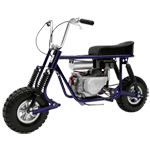The clutch on a 4 stroke engine is one area that is commonly over looked when it comes to engine performance. Many people find the operation of a centrifugal clutch difficult to under stand. The job of you clutch is to allow your engine to idle and take of as you accelerate and the engagement speed of the clutch is related to your engines torque curve. The heavier the clutch shoes the earlier the shoes will touch the drum and your kart will start to drive. With class racing where a particular brand or type of clutch must be used simple clutch maintenance is important with the clutch spring or springs being the key, it is the clutch spring that can give you the edge over other competitors. As RPM build the shoes make contact with the drum, the job of the spring is to hold the shoes in to the desired rpm if the shoes are making part contact with the drum slippage occurs and with slippage comes heat. Heat is the one thing that kills clutches the first thing we have found is the spring that holds the shoes gets over heated and looses tension, when a spring looses tension it allows the clutch to engage lower than your targeted rpm giving the feeling that your kart is bogging in slower parts of the track making most people thing they need to go to a larger rear sprocket to get the kart to accelerate quicker. In theory it might seem the right thing to do but the negative of this is the top end speed drops considerably. The faster you can turn your wheels in a higher gear the faster top speed you will have. There becomes a point where to tall of final drive gearing has a negative affect. You need to get your clutch to engage just under the engines torque curve of your engine, weight, engine condition are all factors that need to be considered when setting up your go kart. By doing this the engine can turn taller gears. A tacho is another thing we find is very helpful along with the timing system at many tracks. On practice and test and tune days try removing teeth of the rear sprocket and compare it with the rpm at the end of the straight you might get a surprise at the results. To work out the gear ratio when the brand and tyre size is fixed for the class simply divide the number of teeth on the clutch into the number of teeth on the rear. 16/66 = 4.125 , 17/70 = 4.11. Gear ratio has no affect on clutch pitch a #35 pitch chain and a #219 pitch chain give the same final drive ratio.

